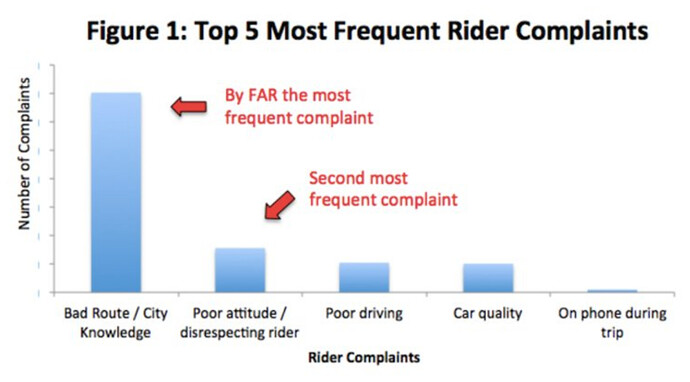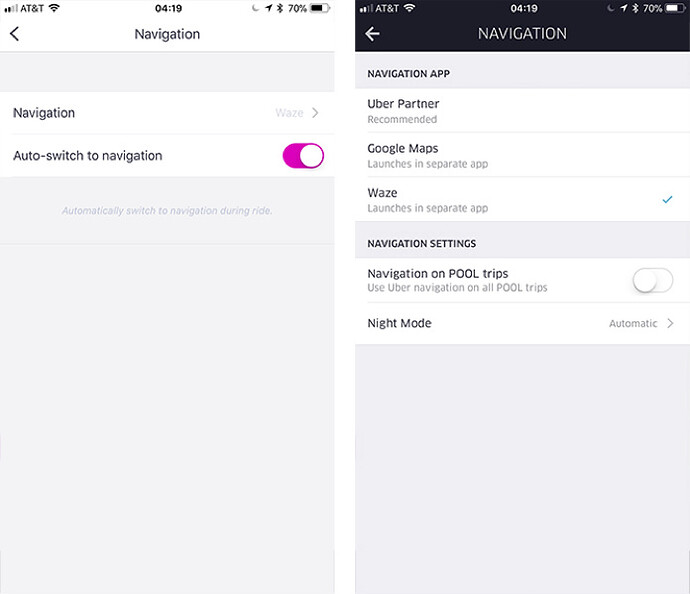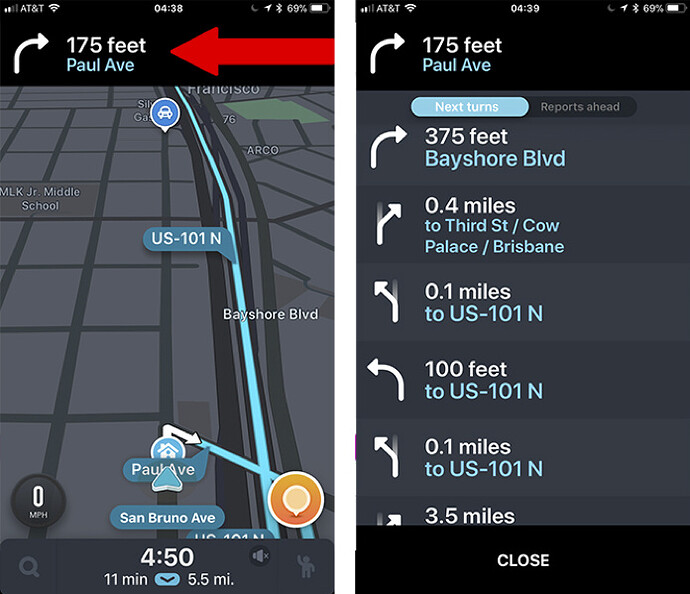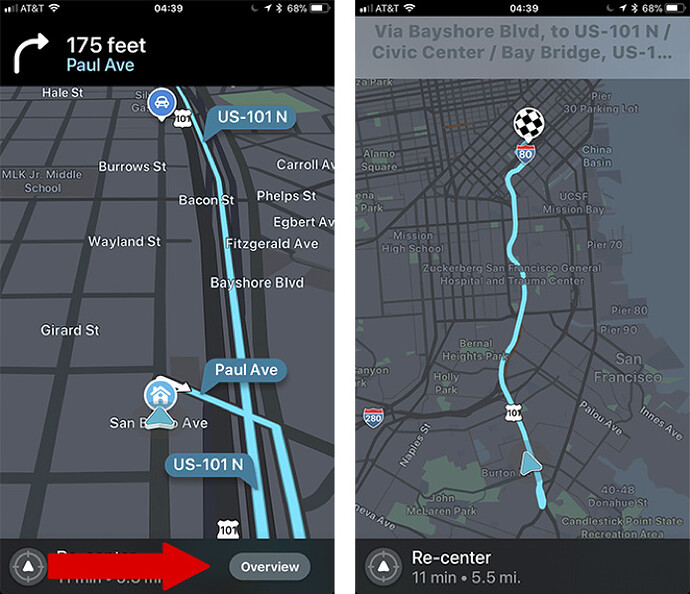One of the biggest issues and most ignored of functions is navigation. Drivers generally claim their unnatural abilities to navigation, and when combined with Waze or Google Maps, usually claim to be totally infallible to any navigational error. Almost as if they were born with a GPS system in their brains.
The reality is far from this, and the largest complaint filed by passengers is their perception of how bad their driver's navigational services were. Or in other words, their blind granny in a rocking could find her way around better.
Based on Uber statistics, drivers get lower ratings mainly due to bad navigational skills. This is why it is important to comprehend the scope of driving fully and the cityscape you drive in. It is no mystery why London Black cabs have to spend 2 years learning" the knowledge" which is a full understanding of the city, how to drive in it, to it and all the various options available when there are traffic issues. Those famous London black cabbies use Waze, even when they don't need to, so imagine how much more an average non-professional Uber driver needs to know the city and how to get around it.
It's a lot more than just the city roads that you need to know; it's about the city, its history, its landscapes, its tourist spots and entertainment sites. An Uber driver needs to know the care that he/she drives in just like a London black cab driver. This is even more important in a tourist city, and there are plenty of those here in the US.
(Source: Therideshareguy.com)
Which Navigation System to Use?
There are two leading apps, but one has the edge on the other, and that is Waze. It is better than Google Maps, but that is because Waze is owned by Google and is their navigation solution that is integrated with the Google map technology.
The pros of using Waze are:
- Waze integrates with both Uber and Lyft apps
- Waze is a P2P system, which means it is crowd-sourced
- Waze provides you with the most accurate duration estimates
- Waze is easy to use
Both Lyft and Uber integrate Waze into their app navigation options. You can either use Google maps or Waze; I suggest Waze only because it is a sort of Google Maps Plus. The only difference, between the two, is in the layers of information. While Waze is purely a navigational aid, Google Maps provides detailed information on companies, sites and tourist location that are registered on their map. So, if you are driving tourists, you might consider Google Maps, for everyone else, Waze.
Now lets concentrate on Waze since 95% of us are not tourist guides.
The Waze Turn-by-Turn Directions Feature
Before starting any trip, always input the destination and get the turn-by-turn feature on so you can have a quick study. Some people are more graphic, so look at the map line of the route. It helps to know before hand, and not just rely on the GPS voice. Also, I find the voice directions to be annoying, especially when listening to music or having a chat with the passengers.
By knowing the route forehand, the passenger that asks which direction I am taking can be answered by the Waze option. Also, most Waze options provide a number of routes, the fastest being the first route. So, if your backseat driver knows better than Waze, make sure you have the answer why your route is better.
The Waze Overview
This is the graphic feature that Waze provides, and it is an overlaying line on the map showing the route from start to finish, including the expected time of arrival.
The navigation process and aids
It is best to use the overview map image, this shows your progress on the map, and also lets you prepare for any complex turn off areas, and sometimes we get those annoying ones where a number of turn-offs appear, and you don't know which one to take. This where Waze fails sometimes, and you need to be extra careful. My trick is enlarging the map as we approach the zone, and then either rely on my own knowledge of the route or if I don't have it, concentrate really hard not to take the wrong turn-off.
Regarding the final destination, I always double check with my passenger, showing them on the map the point that Waze shows me, if the passenger says OK, then off we go. Sometimes I get a passenger that does not know here the destination is, and that happens a lot, I usually ask first off if they have been there before and if not, then I don't ask them to verify, I only aske them for more details, just to be sure.
Back to the sound issue
I'm back to the GPS navigation voice issue. If you are uncertain, you should wear a Bluetooth ear piece and have the nav. voice on. This will help you with turns and is a must when driving to area's you have not visited before or are uncertain about. I always find that one of the biggest issues with passengers is that they expect a private car owner that is using Uber as an extra source of income to be a professional driver like a taxi driver. Well, guess what, we are not, in fact only about 8% of all Uber drivers are full time and long lasting, which means that they have some driving experience similar to a taxi driver, but you can't expect a passenger to understand this.
Drop-off: Lyft over Waze
While Lyft map is not as good as the Waze map for general navigation, it does have an advantage in the pick-up location. The Lyft app zooms into the location, and I get to see the exact pick-up spot the passenger wants. For drop-off, I have to either rely on Waze and zoom in on the map with Waze or go back to the Lyft map and zoom in with theirs. I tend to remain on Waze, since playing around with the map while driving and looking for the drop of point are not actions that are endearing to passengers.
Uber over All
The Uber app has an advantage over Lyft and Waze when it comes to zooming into to pick up and drop off locations. If you want to use Waze, you need to start up by clicking on the navigate button options; Uber does this because they prefer you stay with their app.
The Drop off
Dropping off passengers at the right location is critical for ratings. The more a passenger has to walk to their destination the grumpier they become. So, you need to know which side of the street they need and how close to the building entrance you can get.
Learning which side of the street each destination requires will also change how you drive to the destination. Customers tend to be very praiseworthy when you get them right up to the door. So make sure you have the extracted address as well as the street number, some building has more than one entrance, so try to get the exact entrance too.
Asking Passengers
I know that no one likes a backseat driver, but I have found that two questions always solves any issues, it is "Do you have a preferred route?" this always gives me an answer to whether they know the address or not, if they answer no, then I follow up with another question "Do you have a preferred location for your drop off?" If they have been there before, then they answer with a spot they like the most, if not, they tend to say that they want to be as close to the entrance as possible.
Sometimes I follow up with other questions when driving someone home, such as asking them what the color of their house is, or if they prefer the front or back entrance to a building block.
Summary
Navigation is key to getting your customer from point A to point B quickly and efficiently. Navigation is not just about knowing the various routes; it is about combining the GPS visual aid with the psychology of your passenger's concern that you are not ripping them off. It is also about knowing the city and the places of interested, knowing what is happening and where, as well as being up to date on road blocks, accidents, and other daily issues.
Since Waze is crowd sourced, and since the information regarding many traffic issues comes from people just like you and me, I tend to update info as well. The more you can add, such as where there are road blocks, what is the road block and stuff like that; you will help others. This is the nature of Waze, and that is why as Uber drivers, it is important to participate in improving the experience for others as they improve it for you.




